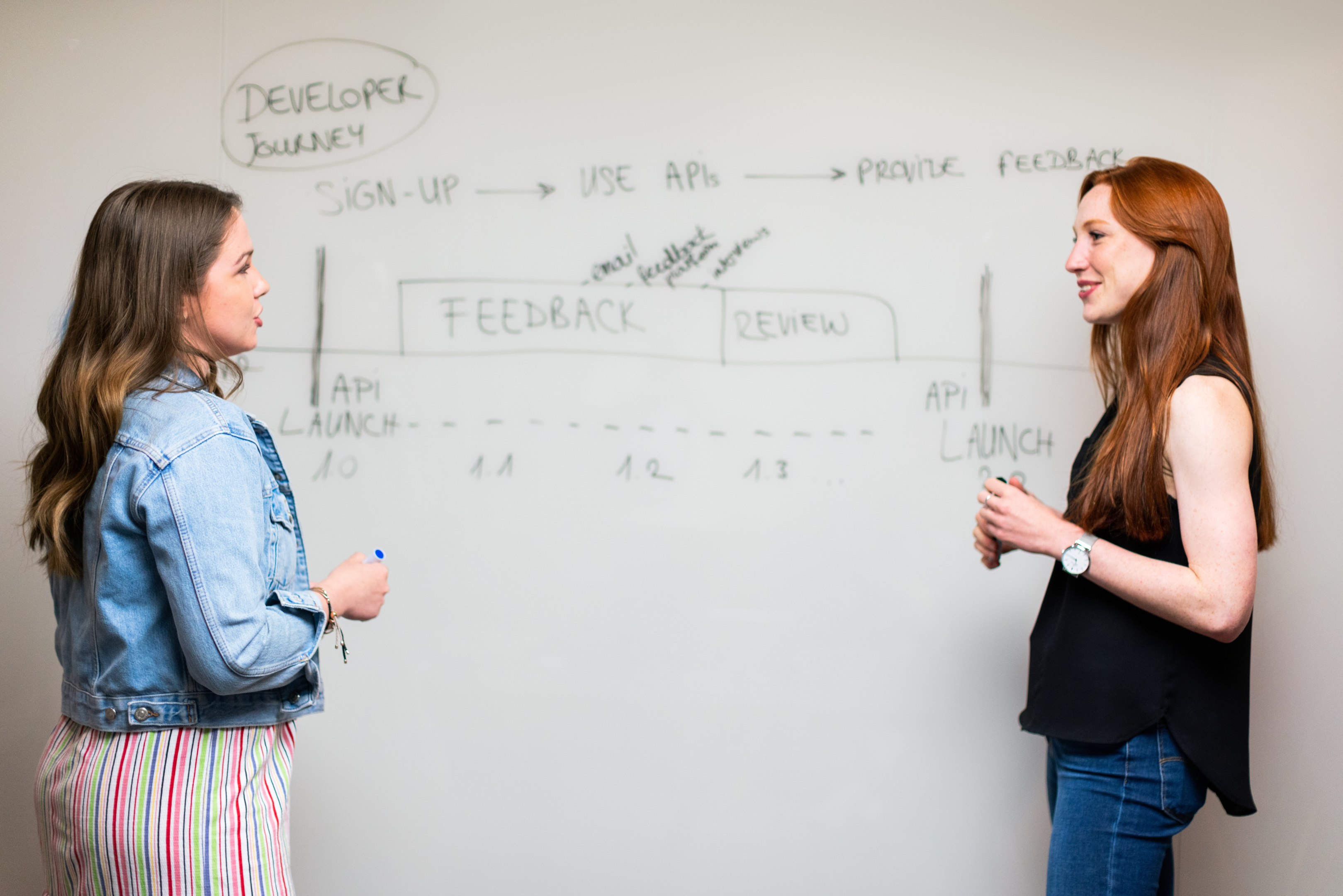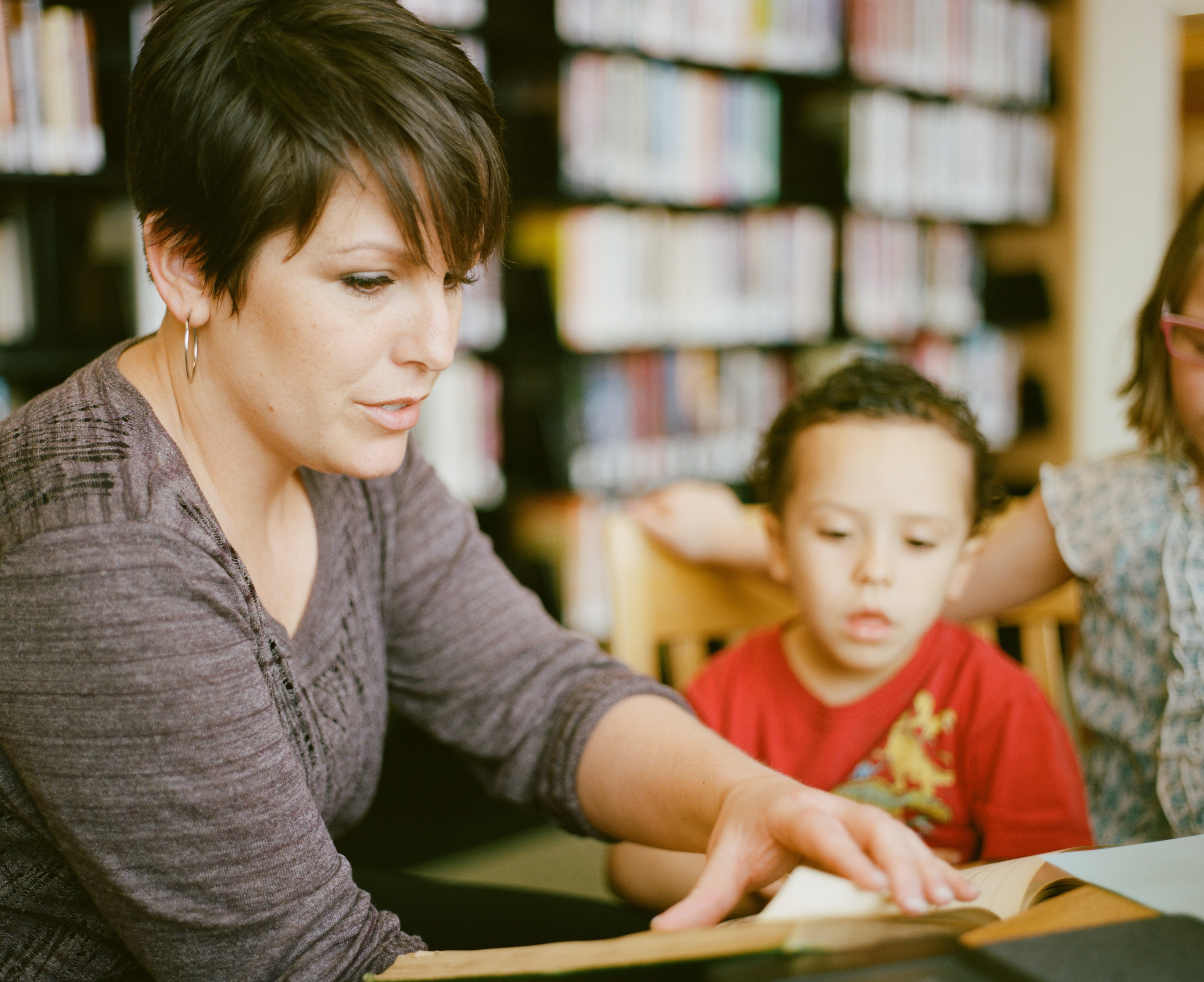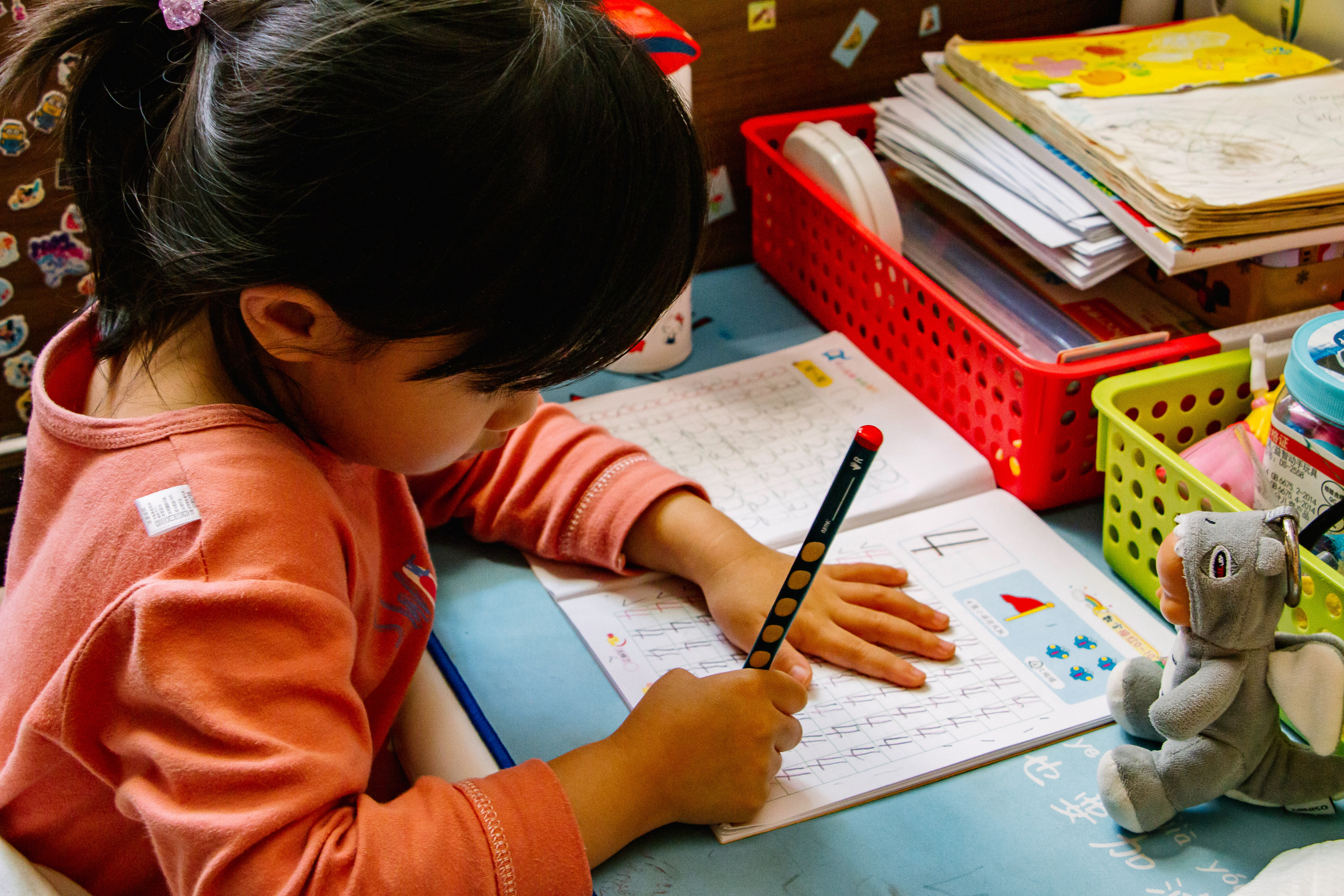
Co-teaching is one of the hottest trends in education, but what is it? And why should you consider adding another teacher to your classroom?
What is Co-Teaching?
Co-teaching is a method of teaching that involves two teachers planning and instructing a class together.
In recent years, it has become increasingly popular in the general education classroom. Both children and teens have seen the benefits of it, while it has been a valuable model for students with special needs for many years now.
If you’re not familiar with co-teaching, you may have heard it being referred to as team teaching or parallel teaching. All of these names describe the teaching model in which two teachers share a classroom and plan their lessons together.
You may be wondering what the benefits of co-teaching strategies are. After all, why would a teacher want to share their classroom? The simple answer is that team teaching models have been proven to boost student learning. They especially assist students with disabilities.
Let’s take a look at some of the co-teaching models you could employ in your classroom.
Co-Teaching Models
So what exactly does co-teaching look like? Co-teaching can look however you and your team teacher want it to look. Having said that, there are some fool-proof models that will ensure team teaching success in your classroom.
Here is a list of five effective co-teaching models to implement in your classroom:
Parallel teaching

Whether you are teaching a general education class or a special education class, parallel teaching can benefit your students.
With parallel teaching, you divide the classroom into two groups. One teacher teaches and supports one group of students while the other teacher does the same with the other group of students.
This model requires teachers to plan lessons together and ensure that students are learning equally. It can be difficult to manage as you’ll need to control the noise level and maintain students’ focus. However, lessons can be more meaningful when taught to a small group of students rather than an entire classroom. It’s therefore definitely worth the effort.
Parallel teaching is also a great co-teaching method for students with disabilities. One teacher can teach with different strategies that meet the needs of their students with disabilities. Meanwhile, the other teacher can be providing instruction to meet the needs of his or her set of students.
One Teach, One Support

Under the “One Teach, One Support” model, rather than being equivalent co-teachers, one teacher will take on the primary role of planning and teaching. The other teacher will walk around the classroom and support the lesson. The supporting co-teacher should distribute materials, identify students who may be struggling, and also help manage students’ behavior.
This is the typical model used in a general education classroom that includes students with disabilities. They can get extra support from the supportive co-teacher while the other teacher provides the general education curriculum to the rest of the class. If you have students with disabilities, then it is especially crucial to figure out a system that gives those students the extra support they need.
The “One Teach, One Support” model can still be beneficial in a general education class, but it is more targeted towards a special education curriculum. Although, it’s also the model that you will most likely incorporate if you are co-teaching with a non-native English speaker in an ESL classroom. So, if you’re an assistant language teacher, this will most likely be the model that your co-teacher and school expect you to follow.
Alternative Teaching

Alternative teaching is very similar to the “One Teach, One Support” approach. However, rather than acting as a floating support teacher, the support teacher will work with small groups. They can even pull the small groups to work together outside of the classroom.
This style of teaching is great because you can arrange the groups to meet particular student needs. Nevertheless, it’s better to try to arrange these groups in a way so that the group isn’t labeled. Students are observant and will quickly notice if they are in the “smart group” or not.
Teachers can avoid such problems by arranging groups for specific needs. A group of students who struggle with a specific writing strategy may not be as easy to label as a group of generally low-performing students.
It can also be beneficial to form a group of students to focus on a specific challenge. This can include students who both succeed and struggle with that challenge. The students who are strong in that particular area can help the other students who struggle.
Also, unlike the “One Teach, One Support” structure, the teachers can tag team this model. Rather than a consistent primary teacher, teachers can switch with each other as the primary and supportive teacher. Planning together is therefore certainly beneficial in this case.
Team Teaching

Team teaching is the model of teaching that most teachers think of when they think of co-teaching. Teachers are working together to plan, co-teach, and share all classroom responsibilities equally. Students can receive a great education when lessons are co-taught following this method.
Lessons utilizing this approach are most successful when taught like a conversation rather than a lecture. When co-teachers are in constant dialogue with each other it creates a dynamic learning atmosphere.
Team teaching is most effective whenever there is a powerful dynamic between the two teachers. For this structure to be the most effective, it is important to pair up with a teacher who really complements your teaching style. It is also helpful to be able to predict your co-teachers next move.
Typically the rockstars of this method are teachers who develop a personal relationship with each other and consider each other friends.
Station Teaching

Station teaching allows co-teachers to work with small groups. It also allows students to work together to solve problems. While teachers are facilitating instruction to a small group, other small groups can allow students to facilitate their own instruction to themselves and each other.
Station teaching has long been incorporated into the special education classroom. This strategy is also often associated with elementary classrooms. However, it has recently been observed that station teaching is also very successful in all classrooms, even high school classrooms.
The benefits of introducing station teaching to the high school level can be seen instantly. Students benefit from learning in small groups. Having two teachers in the room makes this strategy, and similar small group strategies, possible.
Co-Teaching in the ESL Classroom
Co-teaching has been a popular method of teaching in ESL classrooms for some time now. It represents a great model of teaching for ESL and many schools are trying to implement it. However, this hasn’t been without its challenges.
One of the biggest challenges when teaching as an Assistant Language Teacher (ALT) is sharing a classroom with another teacher. You may not share the same teaching principals as your co-teacher and this can lead to new challenges to navigate if you struggle to communicate.
One ESL teacher might enjoy his or her classroom operating a certain way, while the other teacher may prefer a completely different style.
Co-teaching can clearly be a challenge for two teachers who share the same native language and culture, let alone a different one. Therefore, it’s not difficult to imagine that co-teaching with a non-native English speaker can be additionally challenging as you are overcoming a language and culture barrier. It’s important to be mindful of these barriers and learn how to team teach while also being considerate of your co-teaching teacher.
To help achieve this, there are several co-teaching strategies you can use when co-teaching with a non-native English speaker. You’ll find that something magical happens when two teachers combine their teaching styles from different cultures.
Let’s take a look at how to make that magic happen.
Co-Teaching Strategies with a Non-Native English Speaker

Co-teaching with another educator can be difficult even without a language barrier. With the addition of a language barrier, you may find yourself in a risky teaching environment. However, don’t be alarmed. Just like any cohabitation environment, the classroom can still function well with the right steps.
Here are a few strategies that will keep the classroom operating smoothly:
Show respect
This might seem very simple and straightforward. However, it is important to remember that respect has different nuances from culture to culture. In the U.S. respect is often considered something to be earned through behavior. However, in many countries around the world respect is given to people through simple criteria, such as age.
If you are co-teaching with someone from a country with a deep culture of respect, then you will need to be extra considerate of the way in which you demonstrate respect to your co-teacher. You can demonstrate respect through formalities. If you are unsure of how to navigate this, then the best thing to do is to let your co-teacher take the lead in your interactions.
If they are formal, then you should be formal as well. If they tell you that they would like you to be more casual, then follow that as well. It’s better to be overly respectful than to be disrespectful, even unintentionally.
Do Your Research
Learning about your co-teacher’s culture can completely change your co-teaching experience with them. Much like you would with your random freshman dorm mate, you want to learn more about the person you will be cohabitating a classroom with. Ask questions about their teaching practices and also their experience teaching special education or ESL.
You should also learn about your co-teacher’s general education ideologies. The way that Japanese English teachers are taught to teach may be strikingly different than the way an American English teacher has been taught. The blending of these past teaching experiences can be beautiful in the classroom.
In addition to this, it’s crucial to do your research about the culture your non-native English speaking co-teacher comes from. Your co-teacher may make English errors while giving instructions to the class. Your first instinct may be to correct them in front of the students to ensure that the students do not make the same mistake.
However, in many cultures, this action would be considered very disrespectful and may create negative tension between you and your co-teacher. In this instance, it would be beneficial to tell the teacher after the class is over and the teacher can decide how to handle the error correction.
Share Your Teaching Strategies
One of the greatest aspects of a multi-lingual co-teaching classroom is the ability to share your educational knowledge and previous teaching experience. If you have any experience as a special education teacher, then this will especially help you.
Co-teachers benefit from an open dialogue of teaching ideas. Even if you are co-teaching and you are not the primary teacher, it can still be beneficial to share your ideas and opinions. This can be as simple as how to deal with certain student behavior or sharing strategies to check for understanding. Just make sure you are not stepping on the toes of the primary teacher. If you are able to open up an ongoing discussion then the classroom benefit from receiving teaching strategies from teachers with different backgrounds.
Students really enjoy when co-teachers combine their skills and knowledge to create lessons that include both cultures and teaching styles. One teacher may have a lot of experience with grammar, while the other could be great at pronunciation.
Communication
Communicating when you are co-teaching with another educator is essential to both the success of the classroom. If you feel like a lesson did not go well, then communicate that to your co-teaching partner. It can also be vital for your personal mental health, especially if you feel like you need some time off.
Many educators struggle with co-teaching because communicating critique can be difficult. However, negative feelings in co-teaching can only lead to negative results, which usually impact the effectiveness of your instruction.
Just like in any work space, communication can solve a majority of problems. Assistant language teachers often find communication with their partnering teacher to be intimidating. There are nuances and boundaries due to the imbalance of power in planning and facilitating lessons.
To start a dialogue, assistant language teachers should ask the teacher or teachers that they work with, “What does my role in this class look like to you?”. Starting your co-teaching role with this question opens up the kind of conversations you want to have throughout the school year.
You should also remember that assistant language teachers are just as valuable to the class as the primary education teachers. This is as true in the ESL classroom as it is in other classrooms.
Co-teaching is all about compromise. How can you attain compromise? Communication is the only way. You can’t meet in the middle with someone if you don’t know their needs or preferences. That is why communication forms one of the key elements of what makes a good teacher.
Experiment
The best feature of co-teaching is the ability to experiment with various strategies. The strategies that you might implement into your general education classroom might not be the same that you use in your special education classroom.
If you have a classroom with a mix of needs, then experimenting with different structures and methods is really important.
Co-teaching can be awkward until you find the methods that work best in your classroom. Plan out a weekly schedule that incorporates small doses of each of the methods. You don’t want to completely disrupt the students’ routine during this period of experimentation, so you will need to plan with a routine in mind.
After a few weeks of trying out the different strategies, have a meeting with your co-instructor and determine which method seemed to be the most effective with your students.
Conclusion: Get co-teaching!

Co-teaching has become a trend in the classroom for a reason. Whether you are co-teaching as an assistant language teacher, a special education teacher, or a general education teacher, combining your skills and knowledge with another talented educator can really benefit your class. It also helps you meet the needs of students who might slip through the cracks otherwise.
Although it can be a little scary to commit to sharing your classroom, the benefits that this decision will have on your students makes it worth it. You will find that you can manage your students better, discover their individual needs, and develop new teaching strategies through learning and observing another educator.
Don’t be afraid to think outside of the box and plan, plan, plan! Planning together as co-teachers will eliminate any awkwardness that may occur when two educators are instructing and managing a class.
They say that it takes a village to raise children and that means that two teachers are better than one teacher in the classroom. Experiment with the different strategies listed here and find what works best. Co-teaching may be the best thing to happen to your classroom!
- How to Write a TOEFL Essay - April 22, 2024
- What Can You Do with a TEFL Certificate? - April 5, 2024
- 19 Best Learning Management System Examples for 2024 - April 4, 2024








